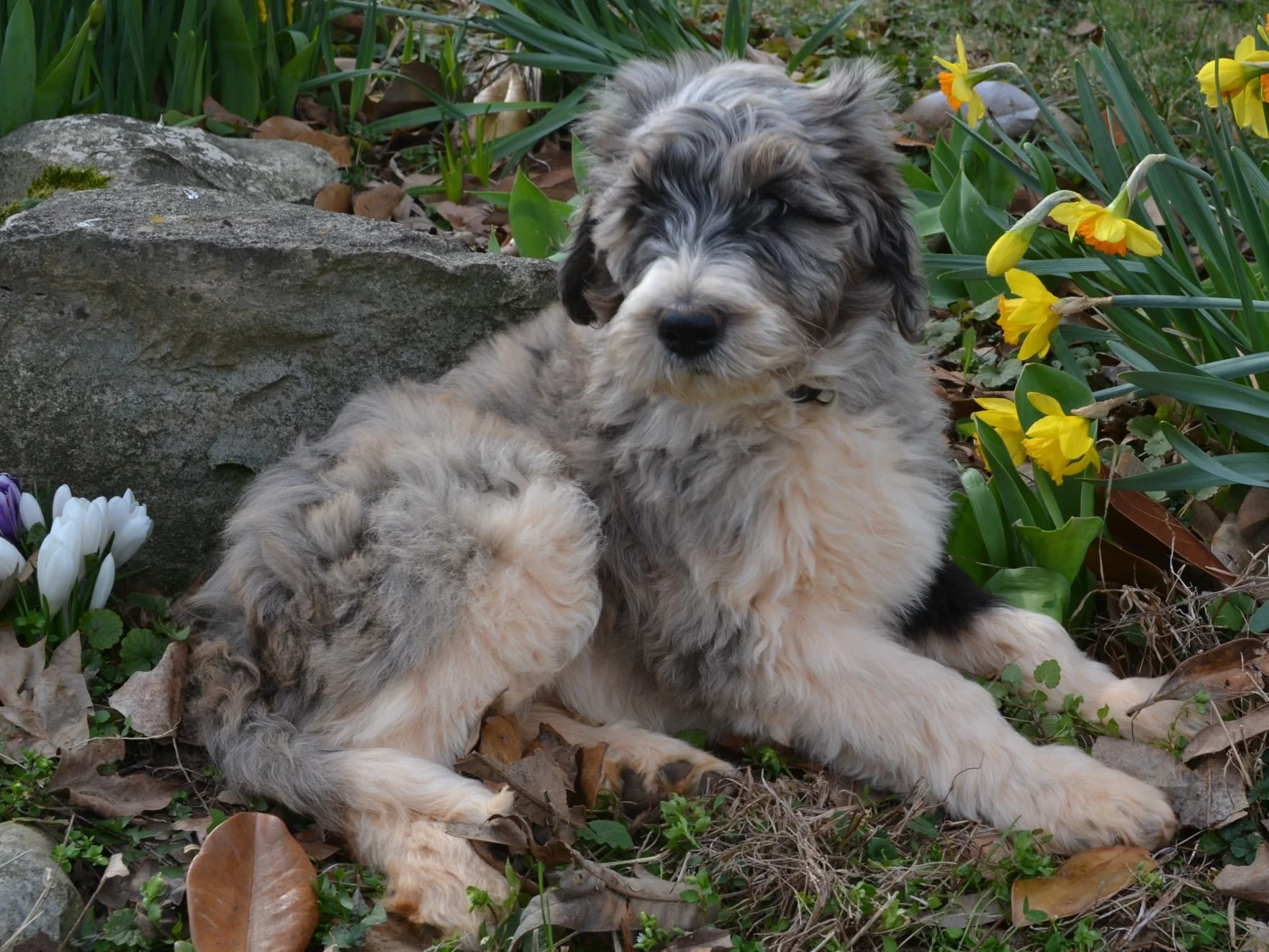Four years ago we introduced merle colors into our litters. WE LOVE MERLE COLORING! It’s distinctive, flashy and unusual in Poodles and Doodles. And just like all our puppies, they have the great personality traits you’ve come to know and expect from Sunset Hill dogs, and they stand out like a diamond in the sunlight.
So what’s this about a dark side?
Six-week puppy with blue merle coloring laying in front of a rock with yellow daffodils to the right and white crocuses to the left.
It’s in the genes. The merle gene is dominant, meaning that only one gene is needed to produce the beautiful merle pattern. But most dominant genes can be paired with themselves. For example, only one brown-eyed gene is needed for a child to have brown eyes because it is dominant over both green and blue. But a brown-eyed child can have two brown-eyed genes with no issues.
A dog with two copies of the merle gene will have an 85% chance (in most breeds) of being deaf in both ears* as well as increased chances of having issues with eyes, bones and heart that may not show up right away.
THAT’S A SHOCKING STATISTIC!
It’s also irresponsible breeding. The breeder that we found to pair with Taffy for our first merle litter told us to look at Taffy’s ancestry to see if there was any chance of merle genes. We did our research. We did our homework. No merle, so the breeder accepted our girl for breeding. But it still astounds me that the incidence of deafness is so high if someone makes a mistake.
So PLEASE,
Enjoy the color! Enjoy the coat! But if you are looking to have one litter with your girl before spaying, just don’t. If you entertain the thought of leaving your male intact as a pet, with even the remotest chance that he might get away and find a girl in season, just don’t.
Take a look at the beautiful puppies we have available! They are healthy and sound.
*”What Makes the Merle in Dog Coats? The Science Behind the Pattern;” Caroline Coile, PhD; November 1, 2022; AKC.org




